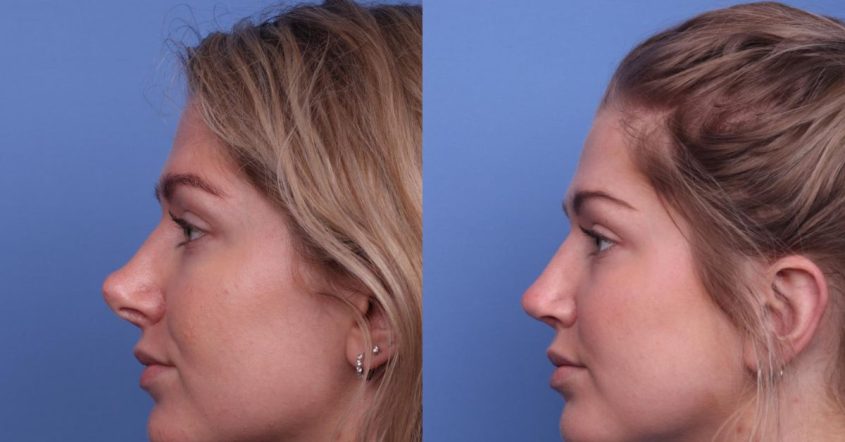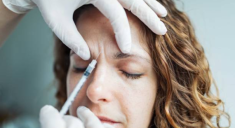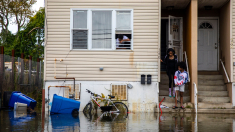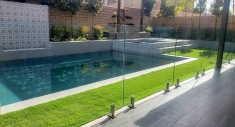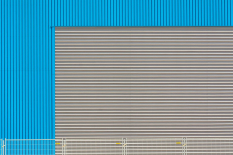Rhinoplasty, or a nose job, is a surgery to reshape or resize the nose for cosmetic or medical reasons. Many people choose it to improve their appearance, correct birth defects, or fix breathing issues. However, some may not be satisfied with the results of their first surgery, leading them to consider revision rhinoplasty. This secondary procedure corrects cosmetic or functional problems from the initial surgery. Common reasons include an uneven or unnatural nose shape, difficulty breathing, poor healing, or an injury after surgery. Because the nose has already been operated on, revision rhinoplasty is more complex and requires an experienced surgeon. Choosing the right specialist is essential for achieving the best possible outcome.
Understanding Revision Rhinoplasty
Revision rhinoplasty is a second nose surgery performed to correct issues from a previous rhinoplasty. It helps improve the appearance, fix breathing problems, or repair complications such as scarring or uneven healing.
Differences Between Primary and Revision Rhinoplasty
Primary rhinoplasty is the first surgery done to reshape or resize the nose. It works with the nose’s natural structure. Revision rhinoplasty, however, is more complex because the surgeon must deal with scar tissue and changes made in the first procedure. This makes it more challenging and requires a high level of skill.
Why Choosing an Experienced Surgeon Matters
Since revision rhinoplasty is more difficult, selecting a highly skilled surgeon is essential. An experienced specialist can carefully assess the nose’s structure and create a customized plan to achieve the best possible results while maintaining proper function.
Reasons for Revision Rhinoplasty
Unsatisfactory Cosmetic Results
One of the most common reasons for revision rhinoplasty is dissatisfaction with the appearance of the nose after the first surgery. Some people may find that their nose looks asymmetrical, meaning one side is different from the other. Others may feel that their nose is still too large or too small, or that the shape looks unnatural. In some cases, the original surgery may not have achieved the desired look, or changes in the nose’s structure over time may cause new concerns. Revision rhinoplasty can help refine the shape, size, and symmetry of the nose to create a more balanced and natural appearance.
Functional Problems
Besides appearance, some patients experience breathing difficulties after their first rhinoplasty. This can happen if too much cartilage or bone was removed, making the nasal passages too narrow. Other times, internal structures of the nose may have shifted, causing blockage or obstruction. Symptoms may include difficulty breathing through the nose, frequent nasal congestion, or snoring. Revision rhinoplasty can reconstruct the internal structures of the nose, allowing for better airflow and improved breathing.
Healing Complications
The healing process plays a major role in the final outcome of rhinoplasty. In some cases, the nose may not heal as expected, leading to complications such as excessive scar tissue, prolonged swelling, or uneven healing. Scar tissue can make the nose look stiff or misshapen, while swelling that doesn’t go away can make it difficult to see the final results. Revision rhinoplasty can help address these healing issues by removing excess scar tissue, reshaping the nose, and improving overall symmetry.
Trauma or Injury After Surgery
Even after a successful rhinoplasty, an injury or accident can damage the nose. This could happen from a fall, sports injury, or other trauma that affects the shape or function of the nose. In some cases, the nasal bones may shift, or cartilage may become deformed, leading to a need for correction. Revision rhinoplasty can restore the nose to its intended shape and function, helping patients regain their desired look and proper nasal structure.
When to Consider Revision Rhinoplasty
Ideal Waiting Period After the First Surgery
It is important to wait at least 12 to 18 months before considering revision rhinoplasty. This is because the nose takes a long time to heal fully, and swelling can last for months. During this time, the shape of the nose may continue to change. Making a decision too early can lead to unnecessary surgery, as some concerns may improve naturally over time. Waiting ensures that you see the final results of your first surgery before deciding if another procedure is needed.
Signs That Indicate a Revision May Be Necessary
Not everyone needs a second surgery, but some signs may suggest that revision rhinoplasty is a good option. These include:
- Unwanted appearance changes – If your nose looks uneven, too small, too large, or unnatural.
- Breathing difficulties – If you have trouble breathing through your nose due to blockage or obstruction.
- Healing issues – If you notice excessive scar tissue, prolonged swelling, or a collapsed nasal structure.
- Pain or discomfort – If your nose feels uncomfortable, stiff, or sensitive even after full healing.
- Injury or trauma – If you accidentally damage your nose after the first surgery.
Consulting With a Specialist for Evaluation
If you are unhappy with your results or experience any of the above issues, the next step is to consult a revision rhinoplasty specialist. A skilled surgeon will carefully examine your nose, listen to your concerns, and determine whether a second surgery is the best option. They will assess the internal and external structure of your nose and discuss realistic expectations. Since revision rhinoplasty is more complicated than the first surgery, choosing an experienced and board-certified surgeon is essential for the best results.
Revision Rhinoplasty Procedure
Pre-Surgery Consultation and Assessment
Before revision rhinoplasty, a detailed consultation with a specialist is necessary. The surgeon will examine your nose, review your medical history, and discuss your concerns. They will also assess breathing function and the condition of your nasal tissues. Since revision rhinoplasty is more complex than the first surgery, the surgeon will create a personalized plan based on your specific needs.
Surgical Techniques Used in Revision Rhinoplasty
The techniques used in revision rhinoplasty depend on the issues that need to be corrected. The surgeon may need to reshape the nose, remove excess tissue, or rebuild areas that were overcorrected in the first surgery. Because scar tissue from the previous procedure can make surgery more challenging, careful planning and precise techniques are required.
Cartilage Grafting (Using Ear, Rib, or Septal Cartilage)
In some cases, additional cartilage is needed to rebuild or support the nose. If the original surgery removed too much cartilage, the surgeon may take cartilage from other parts of the body, such as:
- Septal cartilage (from inside the nose) – preferred when available.
- Ear cartilage – used when septal cartilage is not enough.
- Rib cartilage – used for major reconstruction when a larger amount of support is needed.
This extra cartilage helps improve structure, shape, and function.
Structural Reinforcement and Reshaping
Revision rhinoplasty often involves strengthening the nose’s structure to improve stability and appearance. If the nasal bridge or tip is weak, the surgeon will reinforce these areas to prevent collapse. The nose may also be reshaped to correct asymmetry or improve overall balance with facial features.
Scar Tissue Management
Scar tissue from the first surgery can make revision rhinoplasty more difficult. Excess scar tissue can cause stiffness or an unnatural shape. During surgery, the surgeon may remove or reposition scar tissue to improve the nose’s appearance and function. Proper scar management helps ensure a smoother and more natural-looking result.
Use of Open vs. Closed Rhinoplasty Approach
There are two main surgical approaches for revision rhinoplasty:
- Open rhinoplasty – The surgeon makes a small incision between the nostrils, allowing better visibility and precision. This approach is used for more complex cases.
- Closed rhinoplasty – Incisions are made inside the nostrils, leaving no visible scars. This method is used for minor corrections.
The choice between open and closed rhinoplasty depends on the extent of the changes needed. The surgeon will determine the best approach based on the individual case.
Risks and Challenges of Revision Rhinoplasty
Increased Complexity Compared to Primary Rhinoplasty
Revision rhinoplasty is more complicated than the first nose surgery. The surgeon must work with tissue that has already been changed, and there may be scar tissue, missing cartilage, or structural weaknesses. Because of these factors, the surgery requires advanced skills and careful planning to achieve the best results.
Potential Complications
As with any surgery, there are risks involved in revision rhinoplasty. Some possible complications include:
- Infection – Although rare, infections can occur after surgery and may require antibiotics or additional treatment.
- Prolonged Swelling – Swelling may take longer to go down compared to the first surgery, and final results may take a year or more to fully appear.
- Breathing Issues – If the nasal passages are too narrow or if internal structures are not properly supported, breathing difficulties may occur. A skilled surgeon will take steps to prevent this.
Limitations in Achieving Desired Results Due to Previous Scar Tissue
Scar tissue from the first surgery can make revision rhinoplasty more challenging. Excess scar tissue may limit how much the nose can be reshaped. In some cases, perfect symmetry or the exact desired look may not be possible. A good surgeon will set realistic expectations and explain what improvements can be achieved while maintaining the function and health of the nose.
Recovery and Aftercare
Recovery after revision rhinoplasty takes longer than a primary nose surgery. Initial swelling and bruising usually last 2 to 3 weeks, but mild swelling can continue for up to a year or more. The final shape of the nose becomes visible gradually as the swelling decreases. Most people can return to light activities within 1 to 2 weeks, but full healing requires patience.
Managing Post-Surgical Swelling and Discomfort
Swelling, bruising, and mild discomfort are normal after surgery. To reduce these symptoms:
- Keep your head elevated, even while sleeping.
- Apply cold compresses as advised by your surgeon.
- Avoid touching or putting pressure on your nose.
- Take prescribed pain relievers and follow your surgeon’s care instructions.
Follow-Up Appointments and Monitoring Progress
Regular follow-up visits with your surgeon are important to track healing. They will check for any complications and ensure that your nose is healing correctly. If any issues arise, early intervention can help prevent long-term problems.
Tips for Optimal Recovery and Minimizing Complications
- Avoid strenuous activities like heavy lifting and intense exercise for at least a month.
- Stay away from glasses or sunglasses that rest on your nose for a few weeks.
- Do not smoke or drink alcohol, as these can slow healing.
- Eat a healthy diet rich in vitamins to support recovery.
- Follow your surgeon’s advice carefully to achieve the best results.
Choosing the Right Surgeon for Revision Rhinoplasty
Since revision rhinoplasty is more complex than the first surgery, choosing a board-certified and highly experienced surgeon is crucial. A specialist in revision rhinoplasty will have the skills needed to handle scar tissue, restore nasal function, and improve aesthetics.
Reviewing Before-and-After Photos of Previous Patients
Before choosing a surgeon, ask to see before-and-after photos of their previous revision rhinoplasty patients. This will give you an idea of their skills and what kind of results they achieve. Look for natural-looking outcomes and improvements in both shape and function.
Asking Key Questions During Consultation
During your consultation, ask important questions to understand the surgeon’s experience and approach, such as:
- How many revision rhinoplasty surgeries have you performed?
- What challenges do you see in my case, and how will you address them?
- What type of results can I realistically expect?
- What is your approach to minimizing scar tissue and improving breathing function?
- What is your post-surgery care plan?
Taking the time to choose the right surgeon will increase the chances of a successful revision rhinoplasty with improved aesthetics and functionality.
Conclusion
Revision rhinoplasty can help correct problems from a previous nose surgery, improving both appearance and breathing function. However, it is important to have realistic expectations. Since the nose has already been altered once, there may be limitations on how much it can be changed. A skilled surgeon will explain what is possible and help set achievable goals. This procedure can make a big difference for people who are unhappy with their first surgery, whether due to cosmetic issues, breathing difficulties, or healing problems. By choosing an experienced, board-certified surgeon, patients can improve their chances of getting the best results. If you are considering revision rhinoplasty, take the time to research your options, ask the right questions, and trust a specialist who understands the complexities of secondary nose surgery.

